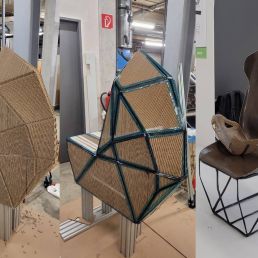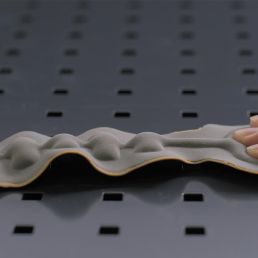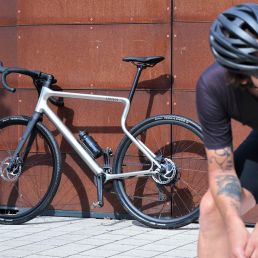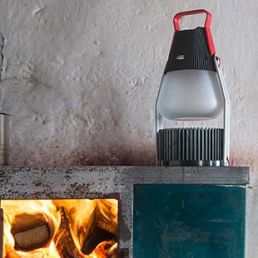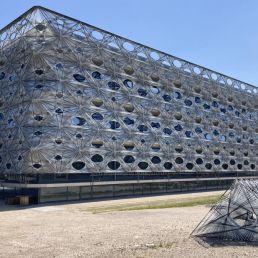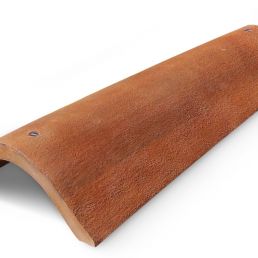Dancing for Energy
Energy Materials for Designers
GRID 1 – Zeitschrift für Gestaltung
November 2012
publisher
Detail (München)

Industrialized nations face enormous challenges as a result of the change in energy policy. At the same time there are a host of opportunities, especially for designers, who can start using new materials thanks to the alternative generation of energy. For designers, the generation of the extremely small amounts of energy needed to operate handhelds is particularly interesting. The term “energy harvesting” refers to systems that are able to generate energy even from small differences in temperature, gentle currents of air, vibrations, and electromagnetic oscillations.
For designers, the generation of the extremely small amounts of energy needed to operate handhelds is particularly interesting. The term “energy harvesting” refers to systems that are able to generate energy even from small differences in temperature, gentle currents of air, vibrations, and electromagnetic oscillations. Examples include thermogenerators (Micropelt) and piezo materials, with which drops in temperature and pressure loads can be turned into electric energy. In this context the Sustainable Dance Club in Rotterdam became particularly well known. There, the kinetic energy of the dancers is used to generate energy to light the club. Another example comes from Innowattech from Israel, who fitted piezo generators for the first time beneath the rails on a stretch of railroad to generate energy from the track load deformation of passing trains to operate barriers.
Integrating energy generation in fibers or material interfaces is indispensable to manufacture devices that are self-sufficient when it comes to energy. Advances in functional inks (Lisicon by Merck), conductive plastics (Heraeus Clevios) and fibers (TITV Greiz, Novonic), and in the corresponding printing technology now enable the production of foils and paper that can contain batteries, light surfaces, displays, sensors, data memories, switchable reflectors, and solar cells. Initial application scenarios were presented at the “Materials for new Energies” conference September 13, 2012 in Frankfurt/Main. Examples include Janis Kanga’s “Luxus” luminaire featuring printed solar cells and transparent OLEDs, and slabs of concrete with integrated dye solar cells by Heike Klussmann and Thorsten Klooster. “Materials for new Energies” are documented in a brochure published by “Aktionslinie Hessen Nanotech”. The study “Intelligent Interfaces” conducted by the Berlin Technology Foundation (TSB) summarizes numerous projects involving e-textiles in the capital city region in Germany.
www.micropelt.com
www.sustainabledanceclub.com
www.innowattech.co.il
www.merck-performance-materials.com
www.clevios.com
www.titv-greiz.de
www.novonic.de
image: Piezoelectric floor in the Sustainable Dance Club Rotterdam (source: Energy Floors)
Ecoblaq molecular wood colours
23 March 2024
Ecoblaq is a molecule manipulation method, a natural chemical reaction, making…
Natural fiber reinforced car seat
22 October 2023
The focus of the project "Design for Recycling" is a seat shell that is made…
MotorSkins morphing textiles
19 April 2022
Berlin based start-up MotorSkins designs and produces textiles with embedded…
3D Pioneers Challenge 2022
15 December 2021
The 3D Pioneers Challenge 2022 adresses tech pioneers who pave the way for…
IGNIS – Light from waste heat energy
12 August 2020
The availability of affordable, independent and, above all, clean electrical…
Brake disc with reduced fine dust
21 April 2021
Fine dust endangers our health. One of the main sources is traffic, especially…
Texoversum
15 July 2023
With the "Texoversum", Reutlingen University has put into operation a training…
Invisible Terracotta Solar Rooftile
10 May 2023
The family-run business Dyaqua has developed a technology to integrate a…
Xarvio – Digital Farming
8 January 2021
BASF Digital Farming GmbH has received the renowned Crop Science Award for the…

